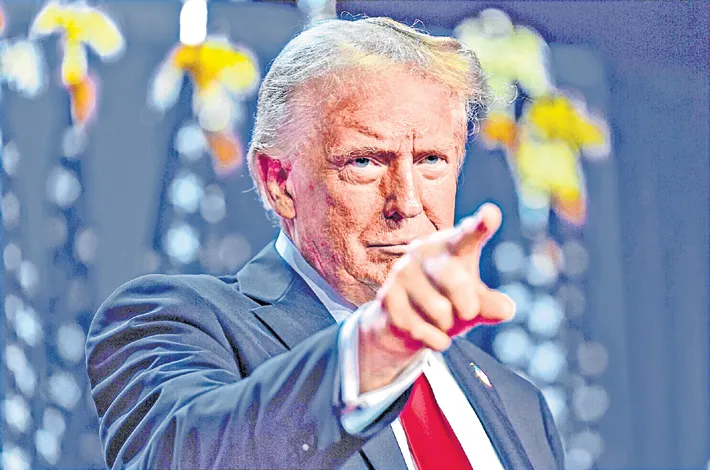MKTS to monitor Q1 earnings, US-India “Mission 500” Pledge
14-07-2025 12:00:00 AM

Trump always chickens out. Smart investors do not anticipate a scary new age of trade warfare. Markets now take tariff threats much less seriously than they took Trump’s early rhetoric, and are betting that the US will ultimately step back from tariffs
FPJ News Service MUMBAI
Indian stock markets will track quarterly earnings of blue-chip firms, and the outcome of ongoing India-US trade talks this week. Siddhartha Khemka, head -research, wealth management, at Motilal Oswal Financial Services, said, “As the earnings season progresses, markets are expected to witness volatility driven by stock-specific factors.”
“The domestic indices witnessed two consecutive weeks of selling amid persistent global trade tensions and a weak start to the earnings season. Delays in finalizing the India–US trade pact, coupled with the U.S. decision to extend tariff deadlines, have added to short-term uncertainties. Consumption-oriented sectors such as FMCG and discretionary stocks experienced selective buying, supported by signs of urban demand revival and improving margins. A backdrop of easing inflation, declining interest rates, and a favourable monsoon contributed to the overall positive undertone.
“Broader indices slipped into negative territory due to a lack of triggers to sustain current premium valuations and uninspiring results from a key IT bellwether, which raised concerns over FY26 earnings estimates.
“As Q1FY26 earnings unfold, investors are closely monitoring guidance on margins and sector dynamics. Upcoming economic data releases including inflation figures from the US and India, as well as China’s GDP numbers are expected to draw investor attention,” said Vinod Nair, head of research, Geojit Investments. On Feb 13, 2025, the US President and Indian PM had resolved to deepen the US-India trade relationship to promote growth that ensures fairness, national security and job creation. The leaders had set a bold new goal for bilateral trade–“Mission 500”–aiming to double total bilateral trade to $500 billion by 2030.
“Tariffs will protect a nation’s economy, promote domestic manufacturing and increase demand for locally-made products. At the same time, tariffs can also increase costs for manufacturers who rely on imported goods,” experts said. On the macroeconomic front, participants will closely track the WPI and CPI inflation data scheduled for July 14 for further cues on the economy, Ajit Mishra, SVP, research, at Religare Broking, said.








